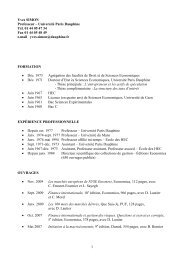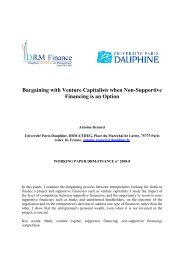Corporate governance and earnings management ... - CEREG
Corporate governance and earnings management ... - CEREG
Corporate governance and earnings management ... - CEREG
Create successful ePaper yourself
Turn your PDF publications into a flip-book with our unique Google optimized e-Paper software.
proponents of the dynamic approach, <strong>and</strong> the average term of investments. Kripke, among<br />
others, believed that a suitable maximum term would be 20 years (in Catlett & Olson, 1968, p.<br />
142). The APB’s 40-year maximum was generally understood to be a “compromise”, granted<br />
to companies as an incentive to replace the old write-off method (Arthur Andersen, 1970, p.<br />
4; quoted in Hughes, 1982, p. 149) (<strong>and</strong> in our opinion, this change of method was beneficial<br />
for the companies). It must be remembered that this compromise took place in an environment<br />
where many companies were actively seeking an even “better” solution.<br />
c) Continued opposition<br />
It is always difficult to satisfy all companies, as they all operate in different conditions.<br />
APB 17 was adopted by 13 votes for over 5 against, indicating significant “resistance” to the<br />
dynamic approaches. The other traditional views in the history of goodwill treatment in the<br />
Unites States – the static view <strong>and</strong> the actuarial view – not only made their presence felt but<br />
additionally gained a certain degree of recognition by being prepared to adapt, <strong>and</strong> proposing<br />
solutions that were even more beneficial than the dynamic approach.<br />
Resistance by the static view<br />
For some companies, busy around 1970 with massive mergers on a scale the United States<br />
had never seen before, the prospect of having to amortize enormous amounts of goodwill –<br />
even over 40 years – was problematic. The immediate reduction in income that would result<br />
was felt to be a less satisfactory solution than a reduction in reserves or equity. These<br />
companies, specifically in the high-inflation environment of the time, contended that the<br />
result of purchase accounting <strong>and</strong> systematic amortization of goodwill “is to destroy<br />
<strong>earnings</strong>”, <strong>and</strong> “the public will not readily accept the concept that <strong>earnings</strong> are destroyed”<br />
(Kripke, in Catlett & Olson, 1968, p. 128). In fact, they argued, “it is likely that many of the<br />
business combinations … would not have occurred if purchase accounting <strong>and</strong> amortization<br />
of the resulting goodwill had been required” (Catlett & Olson, 1968, p. 53).<br />
46


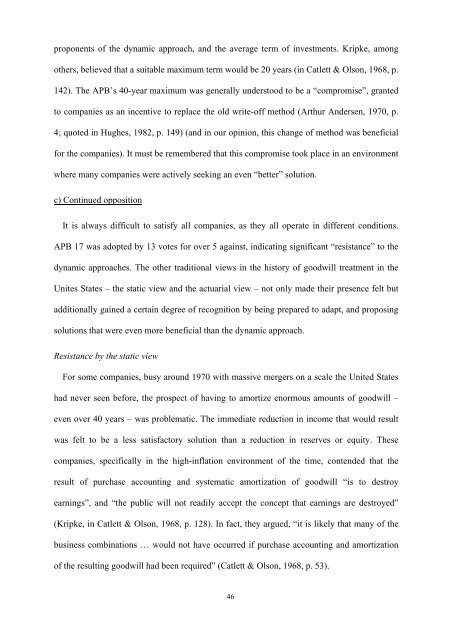
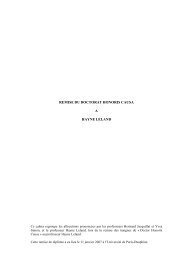

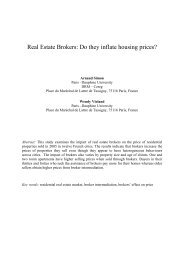
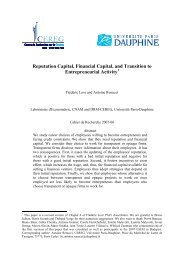

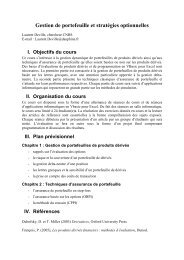



![& 6 ] ^ F ]^ - CEREG - Université Paris-Dauphine](https://img.yumpu.com/33326502/1/184x260/-6-f-cereg-universitac-paris-dauphine.jpg?quality=85)

